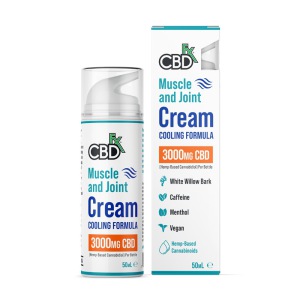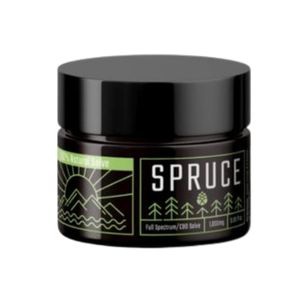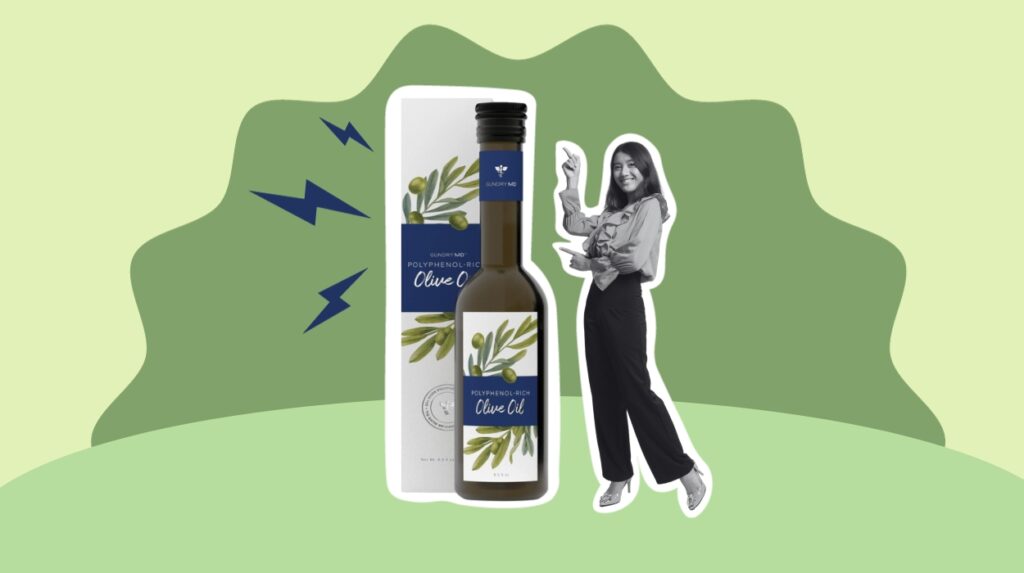
CBDfx
- Full-spectrum CBD
- Third-party tested
- 30-day money-back guarantee
25% Off Coupon: HEALTHCANAL

Spruce CBD
- Made from Full-spectrum CBD
- Highly potent products
- 30-day money-back guarantee
15% Off Coupon: HEALTHCANAL

Joy Organics Sport Cream
- Third-party lab-tested products
- Full-spectrum CBD products
- THC-free CBD tincture
25% Off Coupon: HEALTHCANAL
Plantar fasciitis[1] is one of the common reasons that cause heel pain. Pain in the bottom of the heel or front of the heel is a typical symptom of plantar fasciitis. The plantar fascia is the thick band that runs at the bottom of the foot and connects the heel to the toes. Plantar fasciitis is a degenerative condition that affects the thick band of tissue that covers the bones in the bottom of the foot (plantar fascia). The function of the plantar fascia is shock absorption and supports the arch of the foot, helping us walk. Plantar fasciitis causes falls, pain in the heel, and a disability that results in overall poor quality of life. A survey conducted in 2013 reported that one percent of US adults had plantar fasciitis. The plantar fascia ligaments undergo a lot of wear and tear in daily life. Increased pressure can lead to inflammation, stiffness, and heel pain. Over time, it can tear or damage these ligaments.
Best CBD Oil For Plantar Fasciitis On The Market In (April. 2024)
- CBDfx – Best range of products
- Spruce CBD – Best potency products
- Joy Organics Sport Cream – Best fast-acting products
- CBDistillery CBD Warming Cream – Editor’s choice
- Medterra – Best pain relief products
Does CBD Oil Help Plantar Fasciitis Pain?
Cannabis and cannabinoids work on the endocannabinoid system and can work on multiple pain targets such as neuropathic pain, chronic inflammatory pain, and chronic pain, as in arthritis, fibromyalgia, and cancer pain. In a study with animal models,[2] cannabinoids such as CB1, CB2, endocannabinoids, endocannabinoid modulators, and mixed CB1 and CB2 agonists suppressed the pain behavior. CBD is popular in treating pain in arthritic patients. CBD is widely used for pain management, inflammation, and anxiety.
Studies[3] reported that the topical route of drug administration (transdermal absorption) reduced swelling and severe pain due to arthritis. Furthermore, cannabinoid receptors in the brain and spinal cord that handle and process pain suggest that endogenous cannabinoids such as anandamide may control the initiation of pain and its transmission in the central nervous system.
Furthermore, researchers[4] highly recommend using CBD oils to manage hard-to-treat pain such as foot conditions such as arthritis and discomfort caused by foot conditions.
Coming to plantar fasciitis, according to the American Academy of Orthopedic Surgeons, two million patients get treated each year for plantar fasciitis. The major cause is inflammation of the plantar fascia, the connective tissue between the heel bone and toes. Although there are many treatment options, CBD products are a current trend as they offer a wide range of therapeutic benefits.
There are not enough studies that focus on the effects of CBD on plantar fasciitis. However, there are many studies to prove the potential health benefits of CBD in pain management. The anti-inflammatory properties of CBD help reduce plantar fascia’s inflammation and provide relief from pain.
Clinical studies[5] have proved that CBD inhibits the proliferation of T cells. T Cells can both promote and suppress chronic pain[6] as they activate various mediators like endogenous opioids, pro, and anti-inflammatory cytokines, and proteases to control pain directly or indirectly by their effects on pain-sensing neurons or indirectly by modulating the neuroinflammation. Furthermore, CBD reduces the proinflammatory cytokine levels, induces T cell apoptosis, and diminishes the migration and adhesion of immune cells.
CBD is widely used in patients with diabetic neuropathy, and plantar fasciitis commonly coexists with diabetic neuropathy. To this, a study was published in 2020.[7] This study talked about the effects of CBD oil on the pain due to diabetic neuropathy. This study with 29 participants had positive results; CBD provided relief in foot pain symptoms and also helped reduce inflammation. So, does CBD oil help treat plantar fasciitis? Probably yes. Both these foot conditions have similar symptoms such as tissue degradation and pain which leads to heel pain.
How To Use CBD Cream Plantar Fasciitis?
CBD vape
Irrespective of the type of physical pain, vaping is one of the fastest ways our body absorbs CBD content. When CBD is used in vapor form, our body absorbs most of the components present in it. This allows you to quickly experience the health benefits of it. The condensation aerosols make vaping one of the most effective methods of consuming CBD. This method works similarly to the aerosolized therapies used by asthma patients.
People with chronic obstructive pulmonary disorders and asthma use aerosolized therapies and this mode of drug delivery system sends the medication directly into the lungs. This provides instant clinical effects. Moreover, this mode of drug delivery method usually needs less dosage compared to oral and subcutaneous routes. However, vaping also may come with certain side effects such as chest pain, shortness of breath, allergic reactions, and chemical irritation.
CBD Topical
Topical CBD creams can be used just like pain relief creams. CBD is used to relieve pain in arthritis and gout. Since plantar fasciitis also causes foot pain, topical CBD can help with plantar fasciitis. Topical CBD products such as creams, lotions, gels, and salves can be applied to the areas of pain. The analgesic properties of CBD oil work on chronic foot pain and help reduce pain and inflammation.
It is recommended that CBD foot cream is ideal for foot conditions and CBD lotion for skin conditions. Nonetheless, all of the CBD products aimed at pain relief work effectively. You can also use CBD foot creams for conditions that cause chronic foot pain such as Achilles tendonitis, and diabetic neuropathy apart from using CBD for plantar fasciitis.
CBD oil
CBD oil is one of the popular ways to consume CBD. However, if you do not like the grassy earthy flavor of CBD oil then you can go with the creams or CBD vape. Most CBD oils need to be consumed sublingually for better absorption and increased bioavailability. Moreover, CBD oil allows easy dosing so you can increase the dose during too much pain. CBD oils and tinctures are available in a wide range of concentrations, and flavors. They are available in full-spectrum CBD oil, a full-spectrum CBD oil that contains all plant extracts and is considered more potent.
CBD Capsules Or Gummies
Consuming CBD through capsules or gummies is one of the most hassle-free processes. Moreover, CBD gummies are available in flavors to make the taste more pleasant. If you are someone who does not like the natural flavor of CBD oil consider taking CBD gummies.
Benefits Of CBD Gel For Plantar Fasciitis & Foot Pain
Alleviate pain
CBD is widely used in pain management for arthritis, gout, and pain-related behaviors such as anxiety, depression, and difficulty falling asleep due to pain. Hemp-derived CBD is proven to relieve pain, both acute and chronic pain.
A study with 47 people[8] diagnosed with multiple sclerosis was given Sativex (oral spray with CBD and THC) for one month. The study reported that participants experienced an overall improvement in their foot conditions. They reported improvement in pain, muscle spasms, and walking.
Another study from 2016 from the European Journal of Pain used an animal model to check if CBD has the potential to relieve pain in people suffering from arthritis. Researchers applied CBD gel to rats with arthritis for 4 days. This research reported that the inflammation and the signs of pain significantly dropped.
Anti-Inflammatory Properties
CBD, THC, and CBG contain anti-inflammatory effects. When they are all combined, they may significantly improve the foot condition. They not only reduce inflammation but also help in pain management. An animal study conducted in 2016[9] looked at the CBD effects on joint inflammation in rats. This study has shown that transdermal cannabidiol reduces inflammation. It further reduced joint pain and swelling in the rats and no side effects were reported.
A review study from 2017[10] reported that the anti-inflammatory effects of CBD might help in inflammatory conditions, inflammatory bowel disorder, Alzheimer’s disease, multiple sclerosis, cardiovascular diseases, and musculoskeletal pains.
Furthermore, CBD contains tetrahydrocannabivarin (THCV) which can reduce pain and inflammation with its anti-inflammatory effects. Apart from these, it also suppresses the appetite if you suffer from chronic pain in the foot due to excess weight or obesity.
What Causes Plantar Fasciitis?
Several factors could lead to Plantar Fasciitis. The most common among them is age. Generally, the majority of the people suffering from this condition belong to the 40-70 years age group. Apart from the age factor, there are a few other things that could cause this health condition. Here’s a look at some of the most common causes of Plantar Fasciitis
Overweight
Being overweight causes a lot of health issues. Plantar Fasciitis is one such issue caused by excess weight. People suffering from obesity are at a greater risk. It is because of the excessive pressure of your body weight on the plantar fascia ligament. You will be more vulnerable to this condition when you gain a considerable amount of weight suddenly.
Some Exercise Activities
Exercise is good for your health. There’s no doubt about that. However, some types of exercise methods may do you more harm than good. If you run long distances quite regularly, you may develop this condition in the future. Ballet dancing, Aerobic dancing, and pretty much any type of physical activity that puts extra pressure on your foot may lead to plantar fasciitis.
Foot Structural Problems
Some people are born with certain foot structural problems. Flat feet, high arches, and tight Achilles tendons are some of such foot structural problems. Also, some people may develop such issues later in their lives. No matter how they develop these issues, they are more vulnerable to plantar fasciitis.
Dosage & Side Effects
There is no precise dosage of CBD for treating plantar fasciitis. A review from 2017[11] with detailed research found that CBD is quite a safe treatment. However, the studies in the review did not mention the dosage of CBD that is ideal for anyone suffering from pain. Furthermore, it highlighted the fact that different people and different animals may respond to different CBD dosages. Human studies mostly use dosages between 20 and 1500 milligrams per day.
As of now, there’s no prescribed dosage for treating plantar fasciitis. However, we recommend starting with the lowest dose possible and gradually increasing the amount until you get the desired relief from pain. In addition to this, make sure to observe the body’s reactions. Reduce the dosage if you notice any adverse effects. CBD should not be overused as it may cause liver damage over the years.
Now we are coming to the side effects of CBD. After a great deal of research, CBD is considered safe with very few side effects. Although CBD is well tolerated, it still has some side effects such as reduced appetite, dry mouth, drowsiness, diarrhea, and fatigue. CBD sometimes interacts with some medications, including but not limited to blood thinners.
The Bottom Line
Plantar fasciitis may not seem like a dangerous health condition. But, in reality, it is a very painful condition that makes it very hard for people to carry out basic daily activities such as standing, walking, or running.
CBD is a great solution for this health condition, thanks to its anti-inflammatory, pain-relieving properties. So, if you are struggling with plantar fasciitis, try considering CBD and see how it goes for you. Also, make sure that you rest your feet as much as you can.
Frequently Asked Questions
There are not many scientific studies that prove the efficacy of CBD for plantar fasciitis. However, CBD does relieve pain and acts against inflammation. Simply put, CBD may not be an official medication for this condition; it may very well treat it, though.
Many things could cause this condition. The significant ones are age, certain exercises, and overweight issues.
Plantar fasciitis can have complications that can obstruct day-to-day activities. Most people change their walking patterns to relieve the pain caused by plantar fasciitis. However, this change in walking may further lead to problems such as knee pain, foot pain, back pain, and hip problems.
+ 11 Sources
Tnhealth has strict sourcing guidelines and relies on peer-reviewed studies, academic research institutions, and medical associations. We work mostly with peer-reviewed studies to ensure accurate information. We avoid using tertiary references. You can learn more about how we ensure our content is accurate and current by reading our editorial policy.
- Buchanan, B.K. and Kushner, D. (2021). Plantar Fasciitis. [online] Nih.gov. Available at: https://www.ncbi.nlm.nih.gov/books/NBK431073/
- Clayton, N., Marshall, F.H., Bountra, C. and O’Shaughnessy, C.T. (2002). CB1 and CB2 cannabinoid receptors are implicated in inflammatory pain. Pain, [online] 96(3), pp.253–260. Available at: https://www.sciencedirect.com/science/article/abs/pii/S0304395901004547
- Hammell, D.C., Zhang, L.P., Ma, F., Abshire, S.M., McIlwrath, S.L., Stinchcomb, A.L. and Westlund, K.N. (2015). Transdermal cannabidiol reduces inflammation and pain-related behaviours in a rat model of arthritis. European Journal of Pain, [online] 20(6), pp.936–948. Available at: https://www.ncbi.nlm.nih.gov/pmc/articles/PMC4851925/
- Russo, E. (2008). Cannabinoids in the management of difficult to treat pain. Therapeutics and Clinical Risk Management, [online] Volume 4, pp.245–259. Available at: https://www.ncbi.nlm.nih.gov/pmc/articles/PMC2503660/
- Atalay, S., Jarocka-Karpowicz, I. and Skrzydlewska, E. (2019). Antioxidative and Anti-Inflammatory Properties of Cannabidiol. Antioxidants, [online] 9(1), p.21. Available at: https://www.ncbi.nlm.nih.gov/pmc/articles/PMC7023045/
- Laumet, G., Ma, J., Robison, A.J., Kumari, S., Heijnen, C.J. and Kavelaars, A. (2019). T Cells as an Emerging Target for Chronic Pain Therapy. Frontiers in Molecular Neuroscience, [online] 12. Available at: https://www.ncbi.nlm.nih.gov/pmc/articles/PMC6749081/
- Xu, D.H., Cullen, B.D., Tang, M. and Fang, Y. (2020). The Effectiveness of Topical Cannabidiol Oil in Symptomatic Relief of Peripheral Neuropathy of the Lower Extremities. Current Pharmaceutical Biotechnology, [online] 21(5), pp.390–402. Available at: https://pubmed.ncbi.nlm.nih.gov/31793418/
- Russo, M., Calabrò, R.S., Naro, A., Sessa, E., Rifici, C., D’Aleo, G., Leo, A., De Luca, R., Quartarone, A. and Bramanti, P. (2015). Sativex in the Management of Multiple Sclerosis-Related Spasticity: Role of the Corticospinal Modulation. Neural Plasticity, [online] 2015, pp.1–6. Available at: https://pubmed.ncbi.nlm.nih.gov/25699191/
- Hammell, D.C., Zhang, L.P., Ma, F., Abshire, S.M., McIlwrath, S.L., Stinchcomb, A.L. and Westlund, K.N. (2015). Transdermal cannabidiol reduces inflammation and pain-related behaviours in a rat model of arthritis. European Journal of Pain, [online] 20(6), pp.936–948. Available at: https://www.ncbi.nlm.nih.gov/pmc/articles/PMC4851925/
- Pisanti, S., Malfitano, A.M., Ciaglia, E., Lamberti, A., Ranieri, R., Cuomo, G., Abate, M., Faggiana, G., Proto, M.C., Fiore, D., Laezza, C. and Bifulco, M. (2017). Cannabidiol: State of the art and new challenges for therapeutic applications. Pharmacology & Therapeutics, [online] 175, pp.133–150. Available at: https://pubmed.ncbi.nlm.nih.gov/28232276/
- Iffland, K. and Grotenhermen, F. (2017). An Update on Safety and Side Effects of Cannabidiol: A Review of Clinical Data and Relevant Animal Studies. Cannabis and Cannabinoid Research, [online] 2(1), pp.139–154. Available at: https://www.ncbi.nlm.nih.gov/pmc/articles/PMC5569602/







 By
By